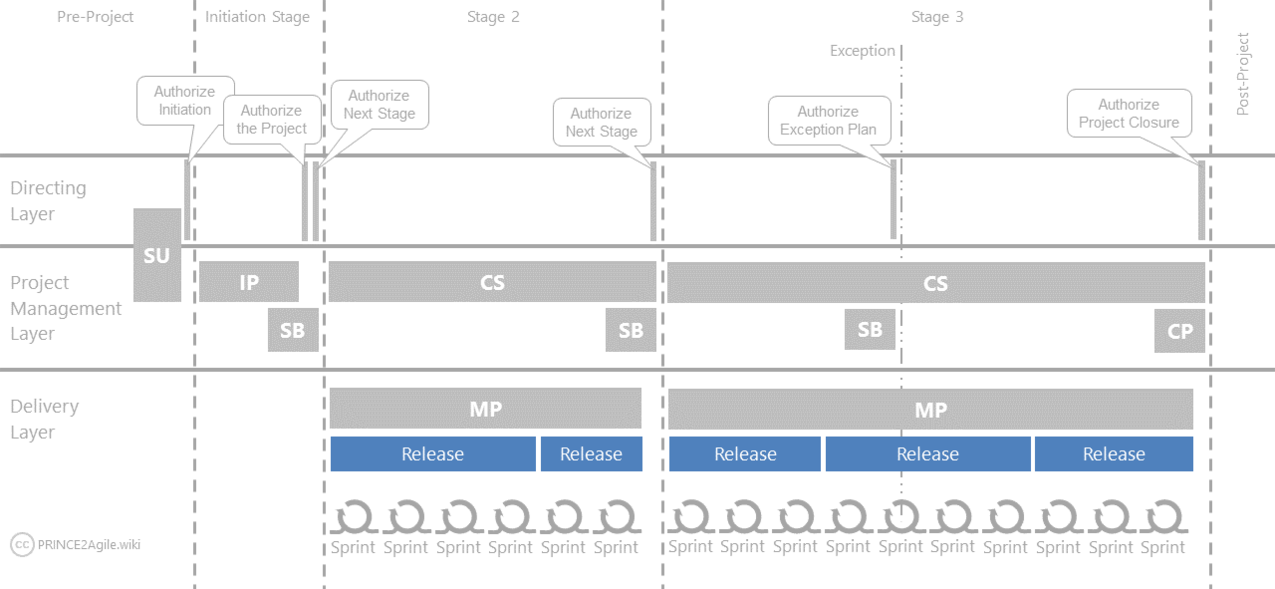Frequent Releases
Every iteration in Agile methods outputs an increment, which is a potentially releasable deliverable. It’s not necessary to release all increments, but it’s a good practice to have frequent releases.
keeping the iterations potentially releasable is required to enable useful feedback; incomplete deliverables do not create a real experience. Even a real release creates a more realistic experience compared to a potentially releasable output, and that’s why it’s preferred.
Besides the role of frequent releases in adaptation, they also help the customer by bringing early value. They don’t have to wait until the project is finished to enjoy its benefits.

Each PRINCE2 Stage includes one or more releases in PRINCE2 Agile, and each release contains one or more iterations. In simple environments, each Stage can be only one release. Based on this structure, it is not possible to have more than one delivery stage when the project is not supposed to have releases.
Both the Project Plan and Stage Plans should include information on releases. PRINCE2 Agile states that: A Project Plan would need to clearly show how many releases were expected throughout the project, when they will take place and what features are intended to be releases. The same applies to a Stage Plan, albeit with a shorter horizon.
This should be kept high-level; otherwise, adaptation/Agility would be too limited.
Written by Nader K. Rad
This is (and will be) a work in progress: More details will be added in the future, depending on the feedback.
This wiki is developed and managed by an accredited trainer, independent of AXELOS. While aligned with their guidelines, it’s not an official resource.
